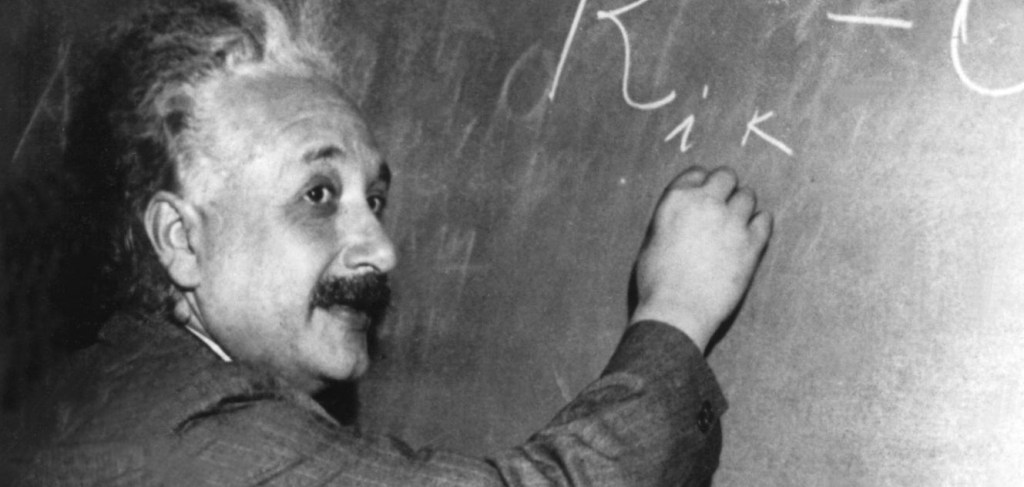You have of course already heard of the theory of relativity, but did you understand it? We explain briefly and simply what Einstein’s theory is. Basically, it is about the structure of space, time and the nature of gravity.
Whoever reads this is (almost) as smart as Einstein
Albert Einstein. He still sticks his tongue out at us because he thinks he understands something we don’t. Namely, his theory of relativity. It is composed of two theories:
- Special theory of relativity (1905) – explains the behavior of time and space from the perspective of observers.
- General theory of relativity (1916) – describes gravity as the curvature of time and space, which is created, for example, by large masses such as stars.
First of all: everything is relative
This also applies to space and time. We already know that the earth, similar to other planets, is racing through space at ridiculous speeds: the earth rotates on its axis, at nearly 1700 km/hr. We here on our planet get nothing of it. Because we are in an inertial system.
In physics, inertial frame of reference is required to describe location-dependent processes exactly. An inertial system is a reference system in which force-free particles rest or traverse straight paths at constant speed. For example, time passes more slowly in one inertial system than in another.
- According to Einstein’s special theory of relativity, all inertial systems are equal in nature. If time passes faster in one system than in another, both properties apply. Time travels faster and at the same time at a normal phase.
- However, one must note that no system, object or particle can be faster than light. At 299,792,458 km/s, the speed of light is an upper limit for speeds.
In such a system that moves at constant speed, physical laws always have the same shape. For example, on the train. You sit and walk through the compartment as if the train is standing still as long as its speed is constant. If you look out of the window, subjectively seen, the world races past you, not you yourself at the world. So it always depends on the reference point of the observer. Therefore, you cannot specify absolute speeds and positions.
The theory of relativity and the speed of light
This aspect of the special theory of relativity is pretty unspectacular at first. But now comes the blast: light, according to Einstein, always moves at the same speed. Nothing relative about it. Before Einstein it was already clear: light consists of waves, not particles. The same applies to sound waves that need a medium (air) to transport them. They don’t get any further in a vacuum.
At the time the theory of relatively was published, researchers assumed that the same applies to light waves. But the universe seemed to be completely empty. That is why it was thought that it was filled with invisible ether on which light waves travel, like sound waves in the air. The physicist Albert A. Michelson found out as early as 1881 that ether theory was nonsense.
It was already clear before Einstein that space and time were relative, but the speed of light was constant. But he managed to combine these actually contradicting facts into one theory. Because Einstein was the first to recognize the consequences.
If light always travels at the same speed, it means that time does not always pass equally quickly and space cannot always be the same size. Because speed is expressed in the following formula as distance through time:
S = D/T
- s = speed
- d = distance traveled
- t = time elapsed
So, the speed of light is always exactly 299,792,458 km/s.
What happens to time when you travel at the speed of light?
According to the theory of relativity, the consequence for an astronaut on board a rocket that approaches the speed of light more and more would be that the time on board slows down more and more. If the spaceship reached the speed of light, the time on board would stand still. If the astronaut arrived at their destination, they would not have noticed the trip. However, according to Einstein, this is not possible anyway.
This is ensured by its famous formula E = mc²: energy equals mass times the speed of light squared. The faster something gets, the bigger its mass. The larger the mass, the more energy is required for the drive. A rocket would need an infinite amount of energy to travel at speed of light. With this formula energy required can be calculated depending on the relative mass. According to Einstein, energy and mass are equivalent. However, the formula cannot be applied to “classical” physics, but only applies to relativistic physics.
Theory of relativity: what are time dilation and length contraction?
Depending on the speed of an object, the time which passes relative to the observer or the length of the object can be influenced. Time and length depend on speed.
The faster an object moves in space, the slower time passes relative to a resting observer. Even in the vicinity of large crowds, time passes more slowly. When an object moves in space at high speed, its length (in the direction of speed) is also compressed.
The theory of relativity: Curvature of space and time
Time passes more slowly near large masses. Large bodies of mass, such as a star, bend space (and time). You can think of this phenomenon as a large cloth that “bends” down when you put something heavy on it, such as a a watermelon. Space-time is curved in a similar way. This means that light is also deflected by large objects.
